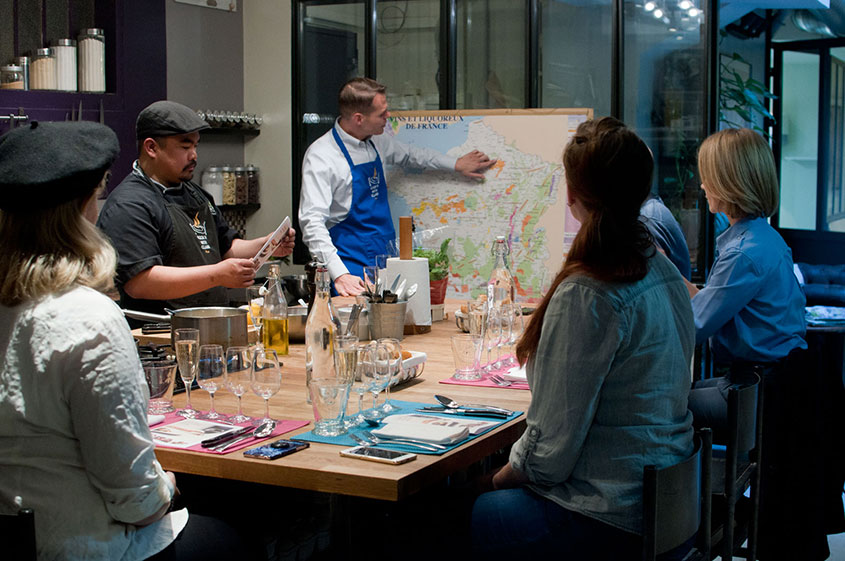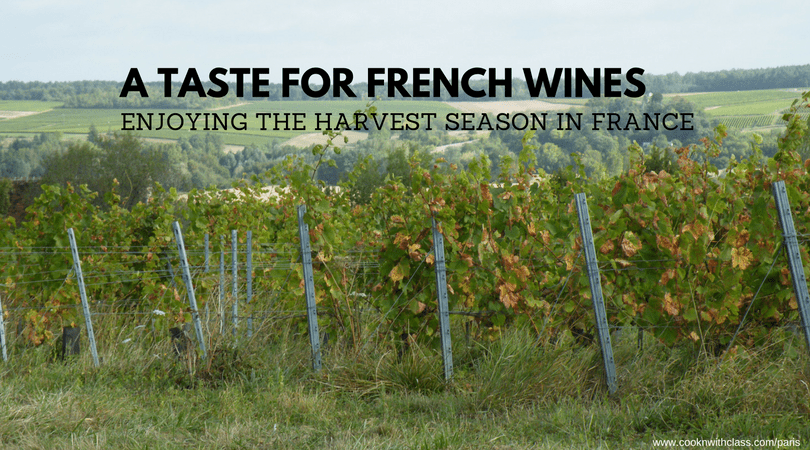
A taste for French wines – Enjoying the harvest season in France
Sipping on samples of reds and whites is a great way for city dwellers to familiarize themselves with, and discover, the wines of France. Regular tastings across Paris allow for wine connoisseurs and the wine curious to ask questions and build a vocabulary when it comes to tasting. While these events are educational and interesting, they often focus on the end product and not the process of winemaking. Hints of vanilla and citrus are fun to detect, and observations about the mouthfeel and legs can help the consumer explain what they appreciate about a wine, but one must dig deeper to know what’s really behind the wine in the glass.
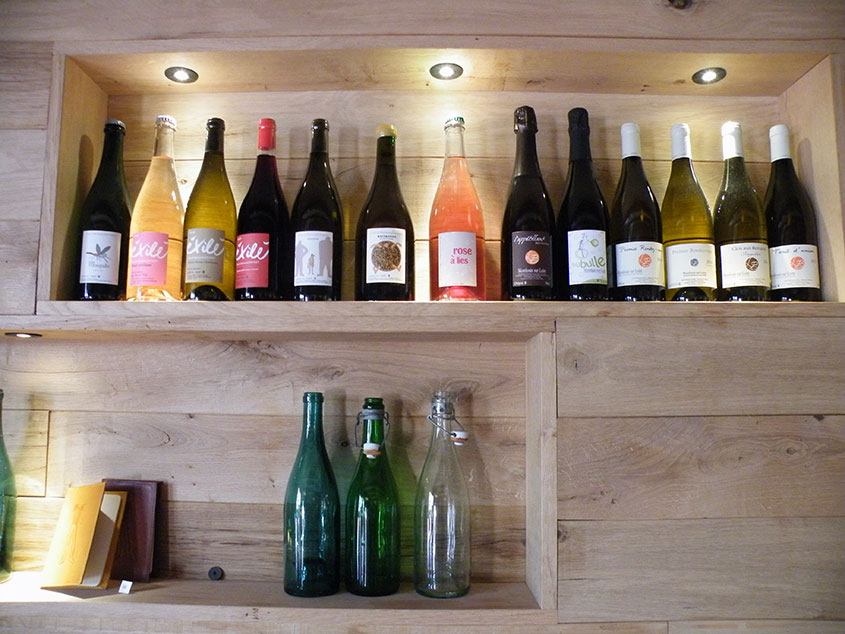
Autumn brings with it harvest season in France, most notably the annual grape harvest, which is a time of activity and excitement in winemaking regions. Harvest, or les vendanges, is a great time to observe the hard work that is done in the vines and the effect this dedicated and meticulous travail has on the final product that we find in the bottle.
If you were to visit a vineyard during this busy time of year you would likely find a lively and social environment, as winemakers often assemble teams to help them during this intense time of year. This is particularly true when it comes to smaller, natural winemakers, who do their harvest by hand. Each harvester working for these winemakers takes on the back and knee breaking task of picking the grapes, bunch by bunch, and examining them for any faults that could have a negative effect on the wine, such as rotting grapes, mildew, or grapes that have been visited by insects and are no longer intact.
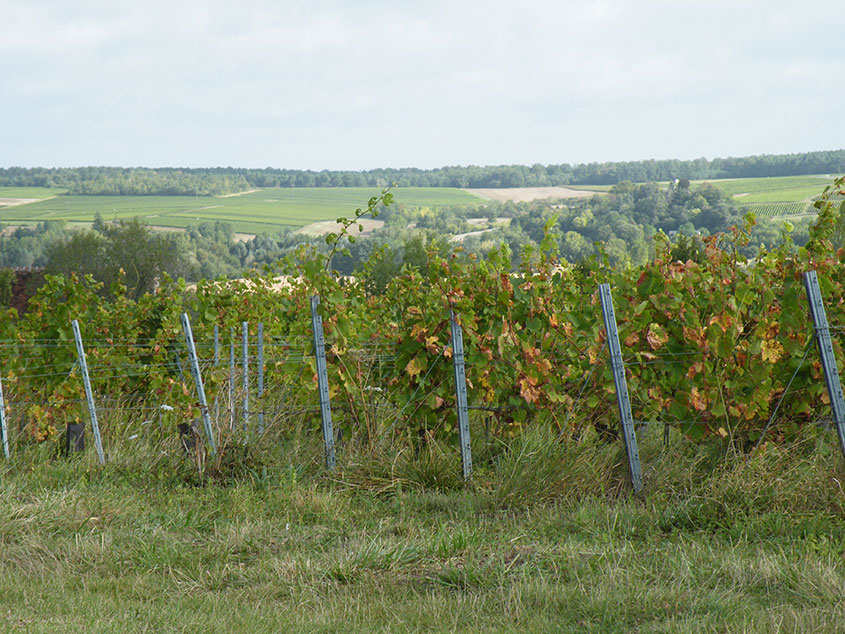
The grapes are then carried out of the rows of grapevines, crate by crate (another backbreaking task for some poor soul) and taken to the wine cellar where they will immediately be prepared for the winemaking process. White grapes will be pressed, the juice immediately transferred to fermentation vessels where they will slowly transform into wine as yeast turns sugar into alcohol. Red grapes are often left either in whole clusters, or taken from their stems and left to ferment, unpressed, in large fermentors where the weight of the grapes will crush the berries as they slowly release their juices which already resemble a refreshing glass of red wine.
Throughout the year, winemakers will check on the progress of the fermentation all while attending to their grapevines to ensure the best possible harvest for the year to come. Pretty much whenever you drink a glass of wine, somewhere in France there’s a winemaker pruning, racking, riding a tractor, transferring juices, or testing for alcohol levels in order to produce a great bottle of wine.
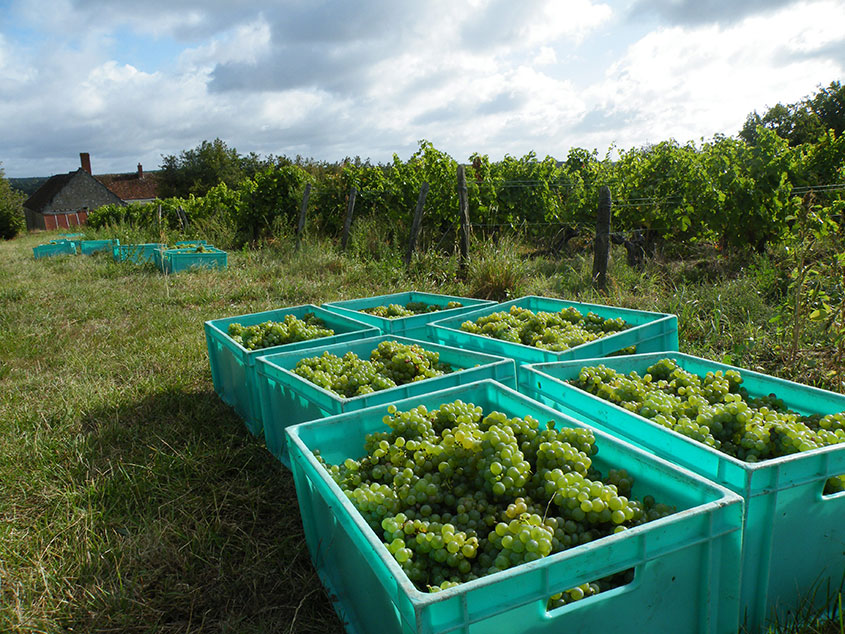
If you’re interested in learning more about the process of winemaking, many French winemakers are happy to welcome guests for tastings and strolls around their vineyard- you could even join them as a harvester during the vendanges if you’re feeling sporty! Next time you have a bottle of wine you enjoy, take a look at the winemaker and consider reaching out to him or her. Knowing where your wine comes from makes it all the more enjoyable!
If you can’t take time to go visit the vines, many wine shops in Paris do regular wine tastings that expose participants to different styles and regions of French wine. Cave des Papilles is well known for its regular tastings featuring natural winemakers from all over France. If you’re looking for an introduction to wine led by a professional be sure to check out the wine-themed classes at Cookn’ With Class, which include a Chef’s Table, a food & wine pairing class in which a chef and sommelier team present tasting plates paired with wines. For a fun intro to the apèro-style class check out their cheese and wine pairing course led by a sommelier.
